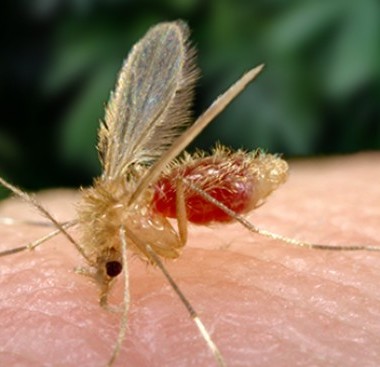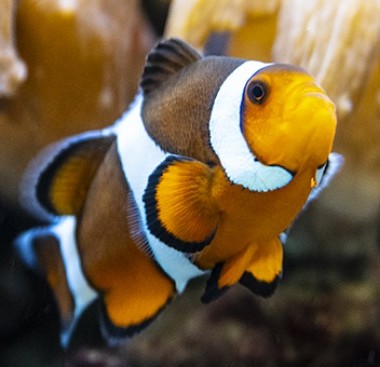Golden Age of Animal Research Ahead
By: Dr. John Richard Schrock Date: 03/12/2013 Category: | Animal Research | Animal Rights Extremism |
A recently published report of the limitations of mouse models ("Genomic responses in mouse models poorly mimic human inflammatory diseases") has been used by the Humane Society of the United States (HSUS). to justify their drive to end all animal use in research. However, this report in PNAS was a further refinement of our knowledge concerning which animal models are useful for studying various diseases, and is not a blanket condemnation of animal research at all.
 John Richard Schrock is a Professor of Biology at Emporia State University and an NAIA Board member. John Richard Schrock is a Professor of Biology at Emporia State University and an NAIA Board member. |
The notion that research animals are only useful when they mimic human complexity is simple-minded. Much modern research is done on other organisms because they possess a basic primitive trait and do not have a complexity that confounds experiments.
For instance, Tetrahymena thermophila is a primitive one-celled organism that allows us to study the ultrastructure, physiology, development, and biochemistry of a cell without the interference of our added-on complexity. This is based on "functional conservation"—the concept that a genetic solution to the chemical problems of living is usually solved only once in evolution, and remains operational in the lineage up to humans today.
Nobel Laureate Andre Lwoff grew Tetrahymena in pure culture in 1923; this led to the later Nobel-prize winning discovery of ribozymes, as well as other discoveries of lysosomes, telomeres, etc. It should not be surprising that the vast majority of Nobel Prizes in Physiology or Medicine have been based on animal research.
Researchers have no reason to use research animals that do not contribute to our understanding. Just as they have lists of animals that are useful for researching certain diseases, researchers have a longer list of animals that are not appropriate. The recent PNAS paper merely advances that knowledge. Indeed, the breakthroughs in the last two decades have spawned a resurgence in both basic and applied research, and expanded the frontiers for animal research. Critical roles of animals in research include:
- Sequencing the genome of a primitive sponge reveals genes for the first signaling pathways and structures of animals, including early genes implicated in cancer.
- Hydra and comb jellies allow researchers to understand body patterning, the origin of epithelia, and regulation of development.
- Flatworms help us understand regeneration of body parts, stem cells, and the beginning of complex behavior.
- The roundworm C. elegans continues to be an excellent model for understanding genetic control of development and physiology; it was the first multicellular organism to have its genome completely sequenced, and revealed that some cells must die on cue for normal development ("programmed cell death").
- Segmented worm larvae have the simplest eyes known; some species are bioindicators of pollution.
- Without the huge neurons of the squid, we could not understand the process of nerve signal transmission because human axons are several orders of magnitude smaller.
- The 20,000 neurons of the sea hare Aplysia allow us to associate nerve cell chemistry with behavior.
- Millions of fruit flies drive our understanding of genetics
- Transparent external sea urchin eggs help us understand fertilization.
- Lampreys are used in spinal cord research.
- African clawed frogs are critical in developmental biology because they have large embryos and a high tolerance for physical and drug manipulation.
- The chicken is used for developmental studies—an excellent model for micromanipulation in tissue grafting and research on the over-expression of gene products.
- The zebra finch is used to study birdsong and non-mammalian hearing systems.
- Ferrets made recent news in studies of mammal-to-mammal transfer of the bird flu virus.
- Downsizing of the chimpanzee research population still recognizes that there are some research applications for which these animals are the only option.
Another case of "no-animal-research, no-cure" is leprosy (now called Hansen Disease). We could not develop an effective drug to the mycobacterium that causes this disease because we did not have an animal model to test potentially risky candidate drugs. When the nine-banded armadillo was discovered to harbor the disease in the 1970s, effective drugs were developed and Western leprosariums closed.
Alexander Fleming tested penicillin in a Petri dish and decided it did not work as a clinically effective antibiotic. But Florey and Chain tested it against mice and found it was effective. The history of biological research contradicts any claims that we can set aside all animal research and just use simulations.
What makes science distinct from non-science is its constant referencing to the real world. No computer simulation, tissue culture, or other model begins to approach the complexity of whole living organisms.
Suppressing science research has consequences as well. Failure to have used animal models would mean nearly all vaccines, antibiotics and other pharmaceuticals could not have been developed. Are advocates of ending animal research willing to bear the responsibility for continuing polio, leprosy, etc.?
With the recent breakthrough in sequencing the genomes of organisms from protozoans to humans, whole new fields of study have opened up. We are in a new golden age of discovery connecting DNA to its physical expressions. New fields of proteomics, transcriptomics, metabolomics, and other "omics" require an expanded research effort to integrate the new molecular data with the biology of whole organisms. Our understanding of life processes forms a vast fabric, the threads of which tie together protists and sponges and worms and mice and chimpanzees and humans.
The HSUS no-animal-research position also ignores animal research that allows us to provide better care for our animals by advancing veterinary science. And ecotoxicity testing, based on the diversity and complexity of animal systems also serves animals by protecting our shared environment.
To end animal use in research makes no more sense than ending plant research or research in the physical sciences. And advocacy for doing so threatens your health and the health of future generations.
About The Author
All Authors Of This Article: | Dr. John Richard Schrock |











